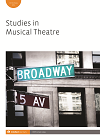
Full text loading...

This article explores how Stephen Sondheim and James Lapine’s Sunday in the Park with George conveys Seurat’s scientific influences, how the show’s Chromolume engages with Seurat and his modernist legacy, and how the 1984 and 2017 Chromolume designs reflect Seurat’s work and legacy. Using original oral history interviews, this article compares the 1984 and 2017 Broadway Chromolume designs to explore how production decisions inform the show’s engagement with pointillism, Seurat and colour theory. By analysing Sunday, this article sets out to provide a case study highlighting how science and technology inform and influence the book, music and theatrical design of a major American musical.

Article metrics loading...

Full text loading...
References


Data & Media loading...

Publication Date:
https://doi.org/10.1386/smt_00062_1 Published content will be available immediately after check-out or when it is released in case of a pre-order. Please make sure to be logged in to see all available purchase options.